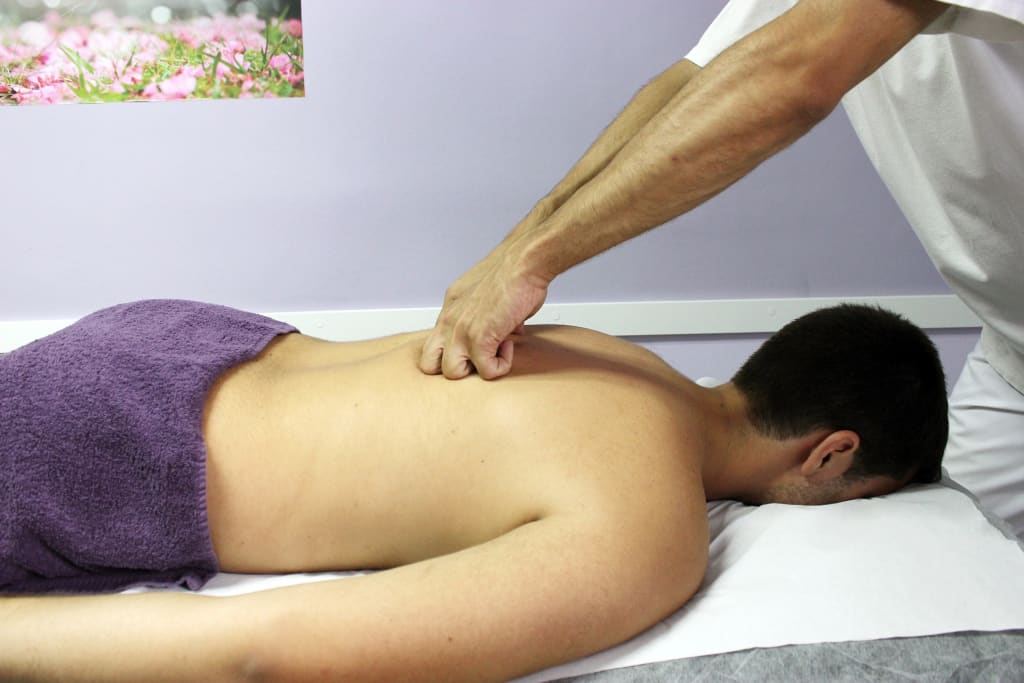8 Common Myths About Osteopathy Busted
Did you believe any of these common myths about Osteopathy? Find out the truth about each of them.

Osteopathy, as a complementary manual therapy, is used along with conventional treatment to improve the health of the whole body system. Osteopathy follows techniques that manipulate to strengthen the musculoskeletal framework.
Osteopaths or osteopathic doctors focus mainly on the spine, muscles, and joints. They use stretching and massage techniques to relieve muscle tension, increase the mobility of joints, enhance the supply of blood, and trigger the healing mechanism of the body. The osteopathic treatment helps people with back pain, problems in sleep cycles, headaches, postural issues, arthritis, tennis elbow, and sports injuries.
Osteopathy is only for back pain

Earlier, osteopaths, known as bonesetters, focused on treating bone-related problems. Though well known for treating back pain, osteopaths successfully treated problems in the skull, connective tissues, and the visceral system also.
Further, osteopaths evolved into specialists who can treat problems in muscles, bones, and the body systems also.
Osteopaths, physiotherapists, and chiropractors are the same

Osteopaths, physiotherapists, and chiropractors focus mainly on providing good treatment to their patients. It is to resolve musculoskeletal problems and improve their health.
The main difference between osteopaths, chiropractors and physiotherapists is their approach to treatment.
Osteopaths have a holistic approach in their treatment and they look at the body as a whole system. Physiotherapists focus specifically on the affected areas and tissues involved in the injury with specific exercises and movements. Chiropractors while treating their patients for back pain focus mainly on improving the functions of nerves, the position of joints, and the spine.
Treatment in Osteopathy is painful

The osteopathic treatment techniques aim at reducing pain and helping patients to be free from pain. The patients may feel some discomfort when osteopaths manipulate or stretch joints and muscles, but it will relieve them from pain.
After attending the treatment session, the patient may feel stiff or have a headache for a while. Numbness or tingling or severe pain may also occur in some instances, but the osteopaths at hand will know how to handle such issues. If the patient reports bowel or bladder problems, weakness of the muscle, nerve damage, or pain in the limb, osteopaths look into it immediately.
Osteopathy a new treatment
Considered to be one of the earliest techniques in manual therapy, osteopathy treatment has been in practice since 1874. Chiropractic therapy and physiotherapy followed it later in the years 1895 and 1896.
Techniques in osteopathy are highly regulated, and based on scientific principles. It takes four years of rigorous training to become a qualified osteopath with continuous knowledge updation of techniques involved in the treatment.
Osteopathy an easy qualification to get

To become a qualified osteopath requires intensive study for five years in a reputed medical university.
During their course, osteopaths learn thoroughly how harmoniously the physiology and biology of the body work together. In addition, they also study clinical medicine, radiology, pathology, physiology, and anatomy.
Before graduation, osteopaths have to fulfill supervised practice for two years.
Never ask any questions to your osteopaths and physiotherapists

While undergoing treatment never hesitate to clear your doubts with your osteopathic doctor. Whatever questions you have regarding the manual therapy, back pain, how your osteopaths treat your bones, and the importance of the osteopathic treatment you are receiving, get them clarified.
This will help the patient to give 100% percent cooperation to the osteopathic doctor and be relieved from pain as quickly as possible.
Sports massage is better than osteopathic massage treatment
Is it not surprising to know that there is only a minor difference between sports massage and osteopathic massage? Sports massage focuses on specific ligaments or muscles or soft tissues that bear the impact of vigorous sporting activities. An osteopathic massage not only focuses on the reasons but also treatment for the overall body system.
Osteopathic massage helps to prevent sports injuries also. With their joint palpitation technique, osteopaths can identify specific areas in the body that can get hurt easily during sports activity. Similar to sports massage, osteopaths use soft tissue techniques, stretching, manipulation, and mobilisation techniques to keep you fit.
Osteopaths can’t treat patients with osteoporosis
As osteopaths can identify the difference between joint or muscle or tendon-related pain and pain due to fracture, it will be easy to proceed further with better treatment.
It is true, osteopaths exclude certain treatment methods that don't suit patients with osteoporosis. There are techniques in osteopathy that can identify risky spots and save patients from fracture.
Awareness regarding available facilities in osteopathy for early diagnosis, treatment, and management of pain in fractures related to osteoporosis is much needed now.
Conclusion
Osteopathy focuses on improving the ability of the body to heal. Many misconceptions exist regarding treatment techniques followed in osteopathy. So, it becomes important to inform the benefits of osteopathy and its effectiveness in removing pain. Initially, osteopathy helped bone-related issues. At present with refined techniques, osteopaths treat issues related to muscles, joints, and overall body system.
About the Creator
Liam Neeson
Writer/ blogger, who enjoys traveling the world and meeting new people!
Enjoyed the story? Support the Creator.
Subscribe for free to receive all their stories in your feed. You could also pledge your support or give them a one-off tip, letting them know you appreciate their work.






Comments
There are no comments for this story
Be the first to respond and start the conversation.